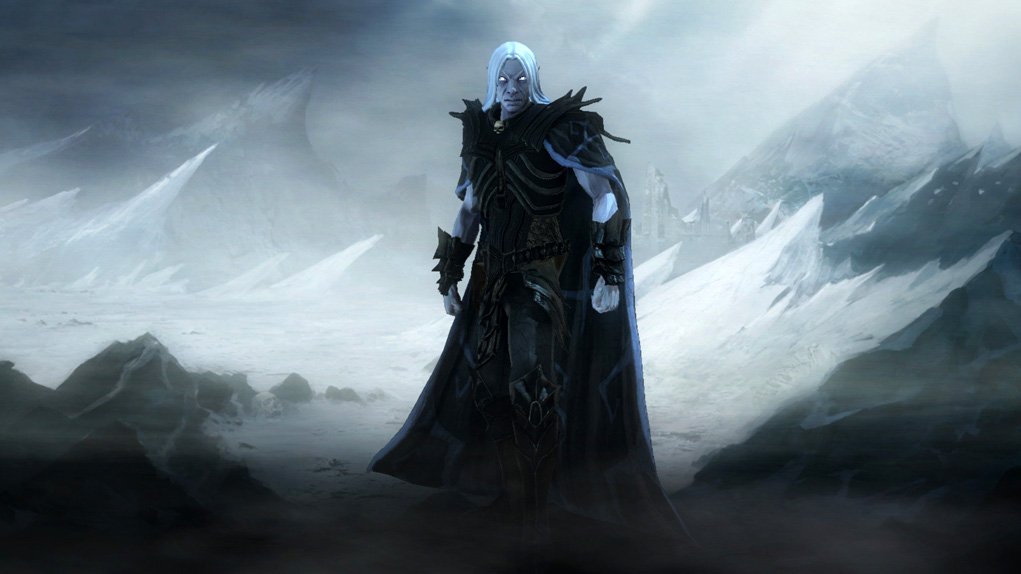Getting lost in a game is tremendously easy. Anyone who’s played a Civilization game can attest to that ever-growing one-more-turn addiction that leaves the sun rising outside and you spending an entire day staggering around, bleary-eyed and unresponsive. Whether or not that’s a good thing is the subject several addiction debates and an ever-growing list of chores left behind. Age of Wonders III’s expansion, Eternal Lords, did this for me.

Since I never reviewed the original game, I’ll probably end up falling back on some general assessment, but my primary focus is the expansion, which adds a new campaign to show off several of the game’s new features – two new races, a new system of ‘cosmic happenings’ that influence everyone on the map, a racial influence system, a new campaign, and, most importantly, a new gameplay class, the Necromancer.
I will admit my bias – the surest way to get my attention in any capacity is to include necromancy. I adore the concept of raised corpses and defying death with magic, and ruling a nation of undead is a major plus for me. In Eternal Lords, you have the ability to play as a commander of the risen dead, leading armies of zombies and monstrosities against your foes and taking their dead as fuel for their armies.
Already, I’m willing to give this a shot. However, one must consider how this new edition fits in with the gameplay. In this case, mostly well.
Necromancers can be recruited as hero units, just as other named characters can in previous AoWII instalments, and are mostly on-par with other heroes, though they are most distinct when you play a necromancer as a leader. Necromancer nations no longer concern themselves with morale of either units or people for the most part – they don’t even concern themselves with population at all. Ghoul cities don’t accrue population – rather their resources come from dead bodies. You can build a whole new selection of structures that increase population production, such as embalmers and necropoli, but corpses are also gathered by killing other units in battle, giving a population increase to the nearest city to the fight. This leads to some interesting changes – map-based resources that increase population and happiness aren’t particularly useful to a nation of ghouls, though spells do exist that allow you to corrupt farms and springs of life to produce undead population rather than people.
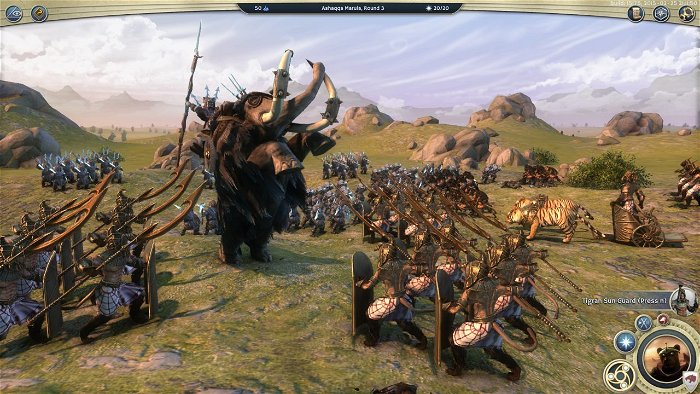
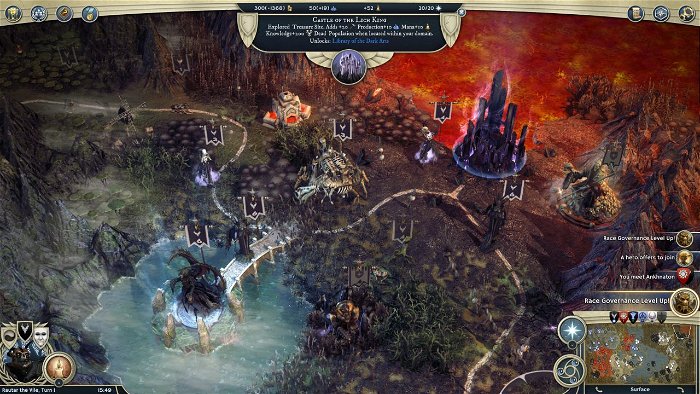
One thing I noticed, though, is how the Necromancers don’t especially mesh well with other units. Undead or ‘Ghoul’ units are normal units with an undead marker. They cannot heal naturally or benefit from healing spells, except for those specifically geared to the undead – which Necromancers can possess in abundance due to the Reanimator units and a research upgrade that gives every support-class unit this power. Most of these things are critical to using the undead, and are only really available if your leader’s undead. Undead units also ignore morale, which means you can easily avoid any morale issued with a fully-undead army (and there’s a research option that makes every unit become undead if they stay in a hero’s unit for one turn, except for a few types). Overall, playing a Necromancer seems to be a largely winning prospect.
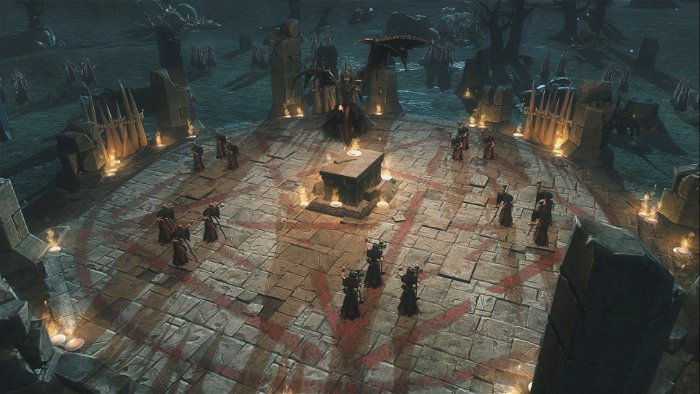
The two new races have some interesting units and landscapes associated with them – the Frostlings are all frost-and-gloom, the Tigrans Egyptian kitty-folk with desert and fire motifs. The designs are rather interesting, as are the new aquatic cities and other special dwellings you can take to make specialized units. There’s also an array of new spells and powers, including alignment-based ones that grant high-powered units. They’re pretty much on par with the rest of the game’s units – distinct enough in the game’s set framework.
As someone who grew up playing Heroes of Might and Magic and Warlock: Master of the Arcane, this style of game appeals to me. It also takes a staggering amount of time, and this game is no different. Playing the campaign, where you take control of a Frostling necromancer trying to bring his people to glory and his Tigran ally, took a lot of time to get through even one mission, with maps filled with side-events and dungeons that amount to a (usually difficult) battle and treasure rewards. The campaign maps are quite detailed and filled with explorable areas and NPCs to kill, as well as other nations to fight against and ally with. Even the randomly-generated maps have a fair bit of detail, though they seem to lack the underground sections (or at least, I could never find them).
All in all, I found myself engrossed in the game, researching and exploring and conquering, but I also found myself getting overwhelmed fast. The game’s costs tend to be somewhat difficult to manage, as do multiple cities, and there’s never enough gold to go around. As you gain more cities, you get more production and are similarly required to churn out units to defend against both wandering monsters and rivals. Costs are immediately taken to fund new projects, so the process is streamlined, but upgrading multiple cities is a right pain and staffing them even worse – the game might be designed around only having a few cities. Mana, on the other hand, always seemed to be at its cap, and I couldn’t spend it fast enough, even casting spells every turn – which conversely meant my turn capacity for spells was depleted, leaving it unavailable to use in combat. As the leader unit can cast any spells in any battle (at increased cost), this became a serious problem in tougher fights.

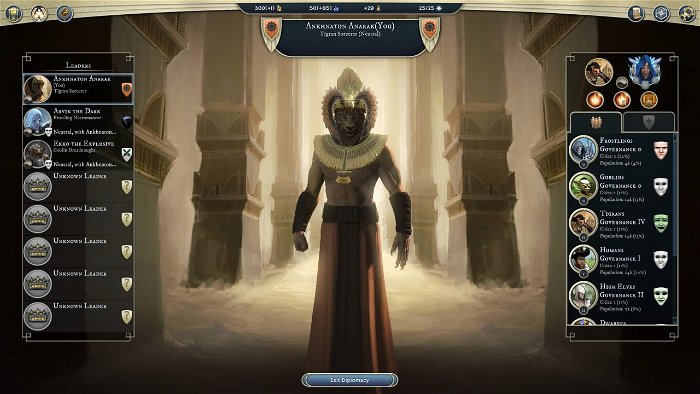
In practice, it meant that the more expensive units were scarce, and weaker grunts would dominate and die quickly to attrition, especially if you choose to resolve battles automatically. The automatic battles are quite misleading and often result in seemingly-random results, with units being killed or even losing a battle that has an almost-guaranteed chance of victory.
In the end, this scratches my Necromancer itch pretty nicely. You feel like you’re raising the people of a nation to serve you as undead, and becoming an immortal god-mage in the process. Combining it with other schools of magic and even pursuing the ‘good’ alignment (necromancy is not truly bound to an alignment, and you can play good or evil if you wish) opens up quite a few possibilities. I’d say this expansion is fairly worth the money, if you really want to add onto your Age of Wonders III experience as a death-defying binder of souls.
